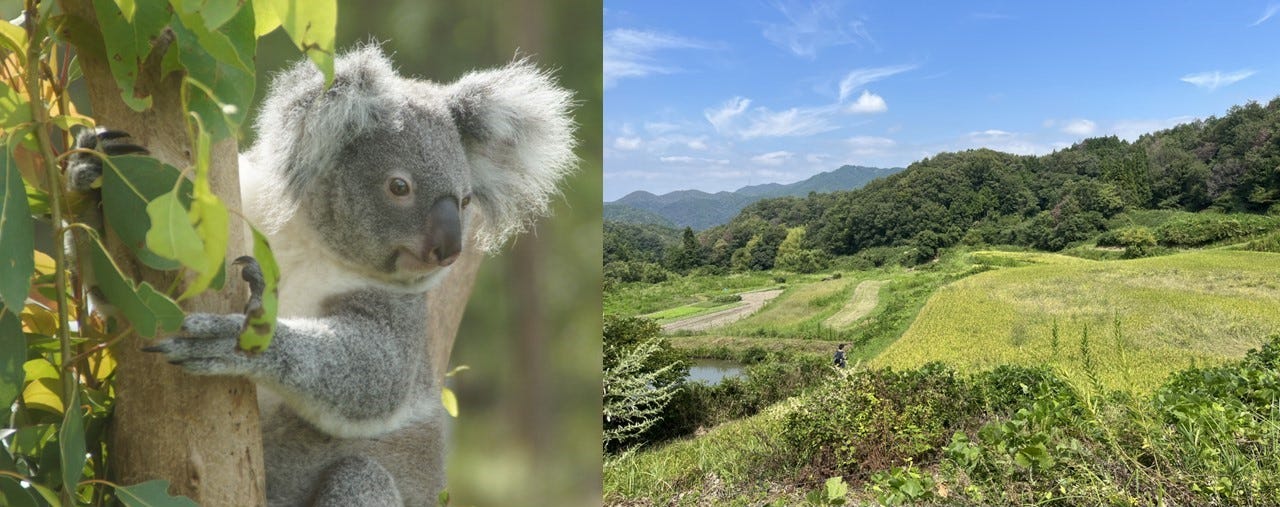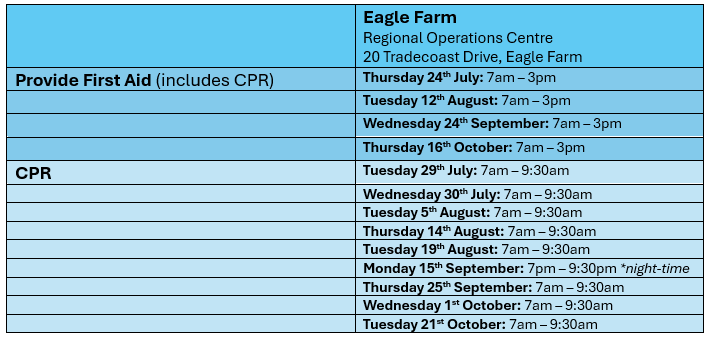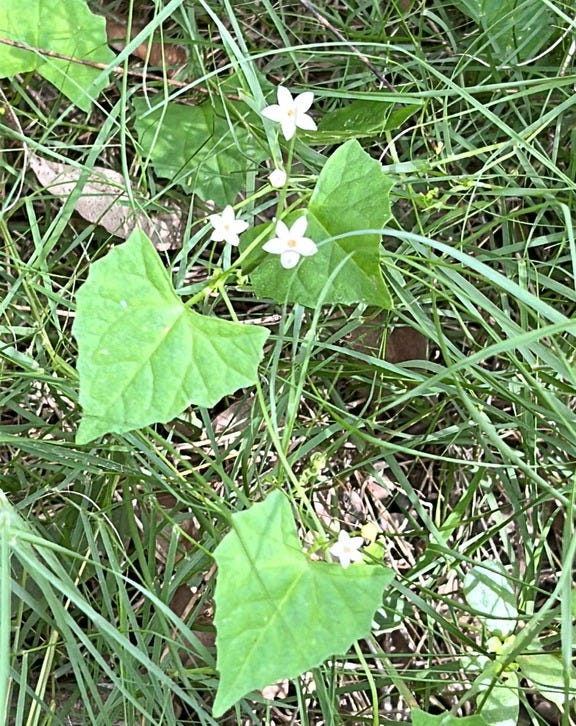Hello Habitat Brisbane Group Leaders,
Welcome to the June 2025 edition of Habitat Brisbane updates, your monthly e-news updates from Brisbane City Council's Habitat Brisbane team.
Group Leaders - please forward this email to the volunteers in your group.
If you received this via your Bushcare Group Leader, you can also subscribe below and we’ll send future editions to you directly! Its free and you can unsubscribe at any time.
O wind, if Winter comes, can Spring be far behind? While it’s unlikely the poet P.B. Shelley was thinking of Brisbane when he wrote this line, it does feel fitting for our short sub-topical winters and their often attendant westerly winds. And despite a chilly start to the season, when you live in south east Queensland its a fair bet that warmer days are never far away.
The short window of cooler and (for now) drier weather in winter does allow an opportunity for Council and other land management agencies to conduct hazard reduction and ecological burns. To stay updated on where and when planned burns will occur across the City’s bushland reserves visit the Brisbane City Council webpage where you view an interactive map of this season’s planned activity and register for alerts when a burn will occur in your local area.
We always welcome contributions to the newsletter, so if there’s something your bushcare group would like to share with the wider network, simply email us at habitat.brisbane@brisbane.qld.gov.au
Happy reading! 😊
In this edition
Humans of Habitat Brisbane - Tim Prieto
Bushcare Basics
Platypus Research
Historical aerial images
Kedron Brook Vision & Master Plan project
Making the Most of Social Media
Upcoming events
CPR and First Aid training
iNaturalist update
Weed of the month - Indian hawthorn Rhaphiolepis indica
Humans of Habitat Brisbane
Tuesday Tree Liberators - Tim Prieto
Since April 2024, Tim Prieto has been a familiar face among the Tuesday Tree Liberators in Mitchelton, bringing youthful energy and a strong environmental spirit to the bushcare group.
What started as a way to stay active during his final year at university has grown into something much more meaningful. “I started volunteering, as I knew I needed to keep active in the week during the busyness of university classes and daily life as well as wanting to feel part of a community,” Tim explains.
With a background in Environmental Science and a passion for sustainability, Tim quickly found purpose among the morning chatter, native plantings, and weeding sessions. “Starting the day with meaningful conversations a shared love of the environment and some hard yakka really sets me up for success I feel,” he says. “Even when I’m hot and covered in soil, I always leave feeling full of life.”
One of the standout moments for Tim has been hearing feedback from the local community. ‘As of late, many members of the local area have sparked up conversations with us to comment on how great a specific newly mulched area looks along a footpath/bike track that I'm sure many pedestrians use daily. It has been really lovely to hear this feedback and to be reminded that our volunteer work benefits not only the natives and waterways of the area but the people too.’
As a recent graduate looking to break into the environmental field, Tim sees volunteering not just as giving back, but also as a stepping stone. ‘I have started job searching, which has been a bit tricky. I keep reminding myself that keeping myself busy with volunteer work, gaining knowledge from others and putting my name out there is all setting me up for success. If anyone wants to reach out with any advice or opportunities, please do so! find me at: timothymprieto@gmail.com’
His advice to other young people considering volunteering? ‘I absolutely am an advocate for other young people to get involved in volunteering within local communities, especially ones that are striving for sustainability and the protection of both natural and built environments. If anyone knows any youngsters with extra time on their hands, I say let them know they should seek some opportunities out.’ Tim prompts, ‘It's normal to be reluctant to dive into unfamiliar spaces but there's often a warm welcome waiting, especially in groups that are upheld by nature-loving volunteers.’
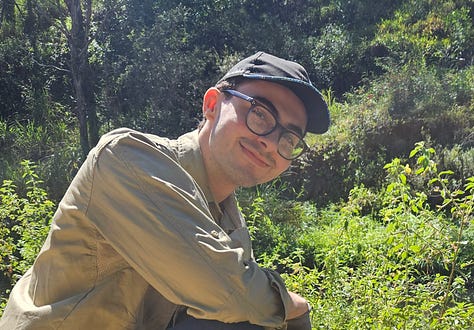
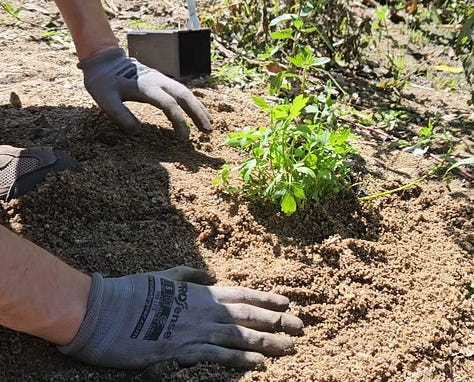
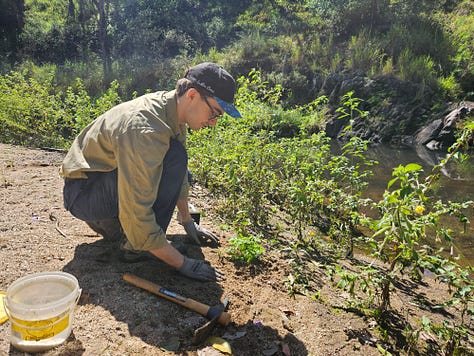
Tim’s story is a great reminder that giving back to your community doesn’t require years of experience—just a little time, a willingness to learn, and a love for the land.
If you have a story you would like to share, please contact Habitat.Brisbane@brisbane.qld.gov.au
Bushcare Basics
Planting a native plant on a bushcare site is simple, right? Pot comes off, green side goes up… what more is there?
Well, there’s a couple of extra steps that will help ensure your plants have the best possible chance of survival. And as the images below show, sometimes even bushcarers may make mistakes!
Ensuring your plants are planted deeply enough so that no roots are left exposed above the soil will help reduce them drying out and greatly add to survival rates. And of course, a good watering in once planted, and at least one follow-up watering if needed, will set them up for good start to life.
Like many things in life, there’s more than one way to plant a tree, but this useful video from Coffs Harbour Regional Landcare Group outlines the basics. Of course, if you have any questions regarding how to plant, please chat to your HB Officer.
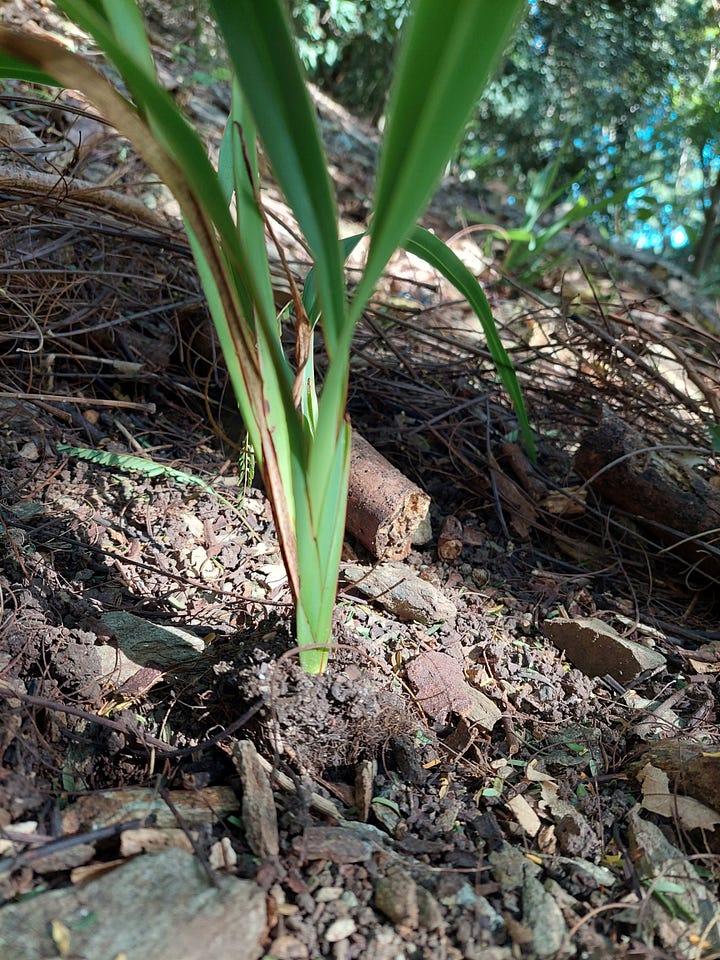
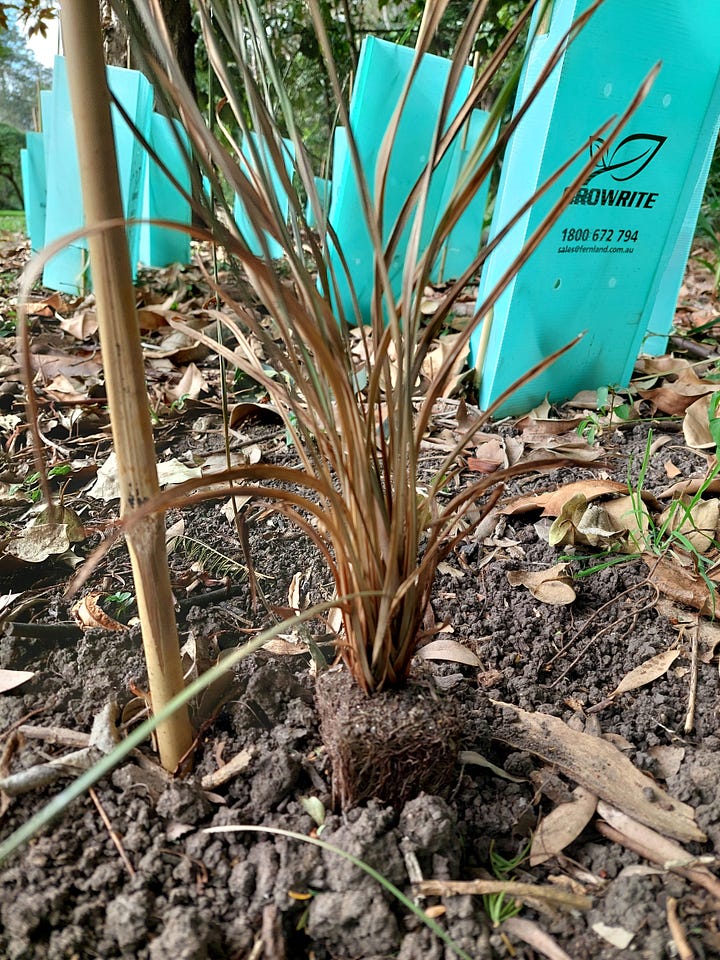
Platypus Research Reveals Urban Waterway Connections
Brisbane City Council’s Natural Environment, Water and Sustainability Branch (NEWS) engaged researchers from the National Platypus Conservation Initiative, led by Dr. Gilad Bino (UNSW Sydney) and Dr. Tamielle Brunt (Wildlife Queensland), to undertake a week-long survey of Bullockhead Creek—an important urban waterway winding through industrial, commercial, and residential areas.
Excitingly, two male platypuses were captured during the study. One was a juvenile recently emerged from its burrow in Wacol Bushlands, confirming that breeding continues in this population. Even more remarkable was the second capture—an older male previously tagged by Dr. Brunt in Moggill Creek in 2020. This individual had travelled over 20 km, crossing the Brisbane River, providing the first confirmed evidence of connectivity between Wacol and Moggill Creek platypus populations.

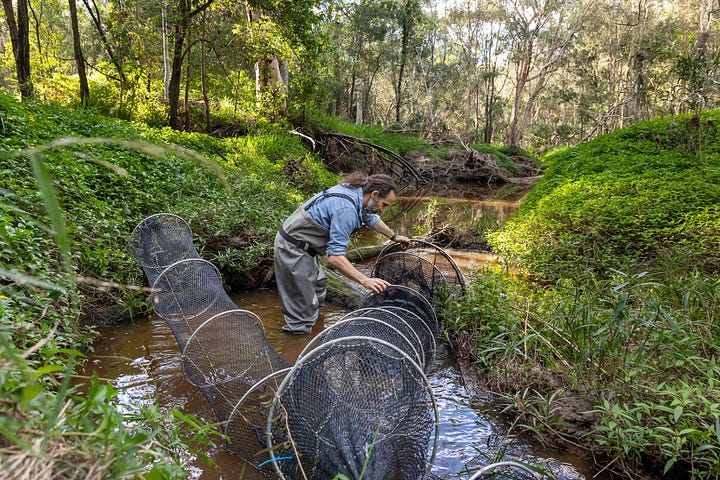
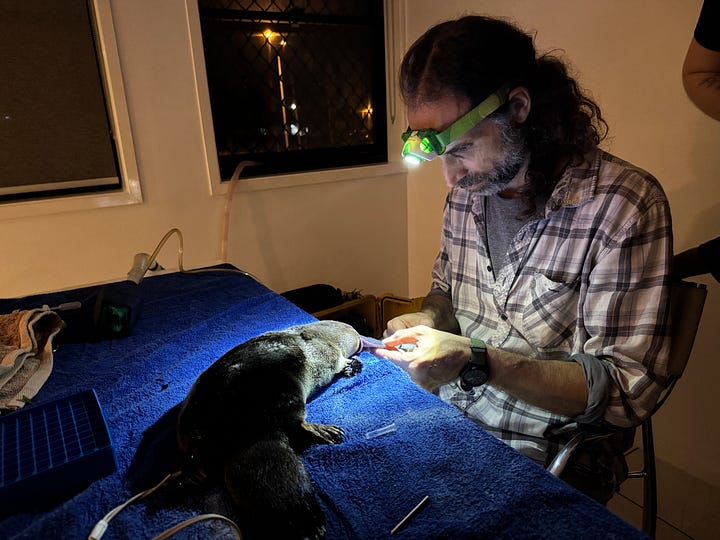
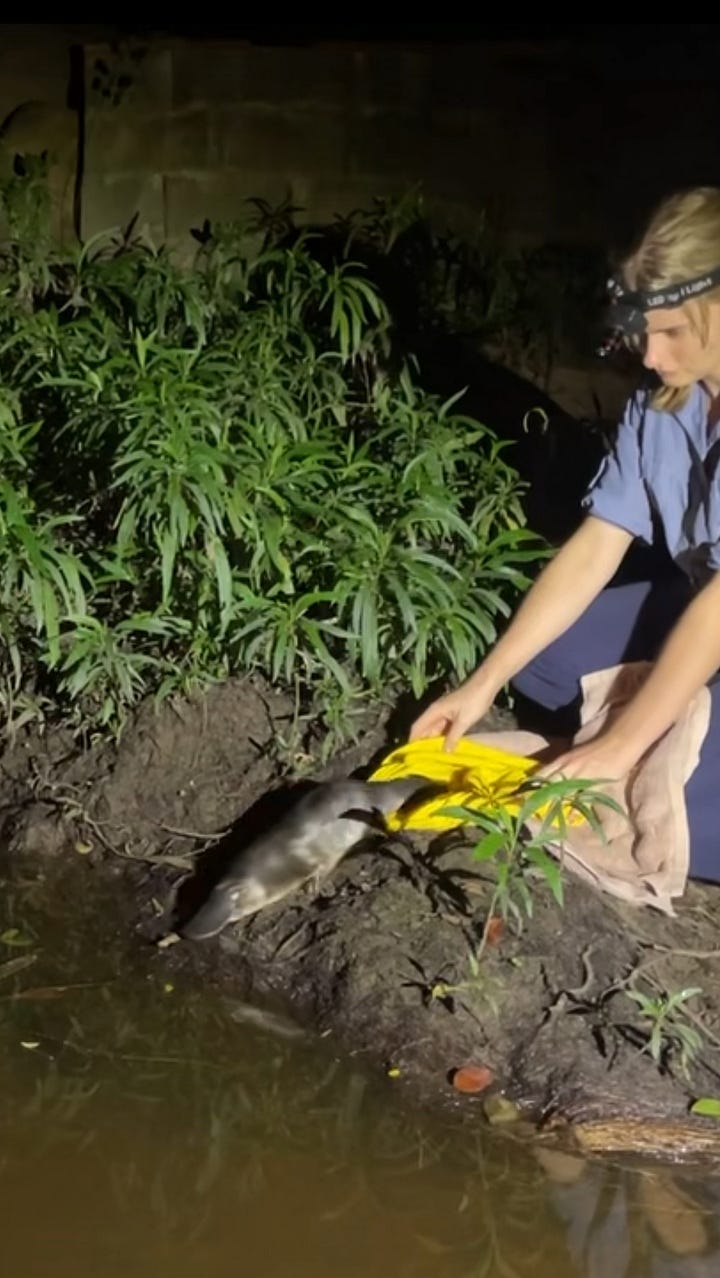
This discovery is vital for understanding the resilience of urban platypus populations. Health and genetic samples collected will provide further information to support long-term conservation planning. While Council has been collecting Environmental DNA for platypus, this study marks the beginning of trapping monitoring efforts to further understand and support Brisbane’s iconic platypuses.
Historical Aerial Images
In a recent Corbie Street Bushcare Group newsletter, Gavin Blakey, a Tennis Avenue Group volunteer forwarded this 1936 aerial pic of the Banks Street Reserve which includes most of the Corbie Street site.
Local volunteers agreeing, ‘It's quite astounding to see how it has changed in just under 100 years.’
Why not try searching for your bushcare site using the QImagery website.
Thanks Gavin and Corbie Street volunteers for sharing!
Kedron Brook Vision and Master Plan project
Brisbane City Council is planning to create a 20-year vision and master plan to revitalise and rejuvenate the Kedron Brook catchment. Kedron Brook is a much-loved destination for many local residents, and we want to ensure it continues to be a great place to visit by boosting flood resilience and improving lifestyle outcomes.
At this early stage of the project Council is keen to understand your aspirations and perspectives about where and what we focus on over the next 20 years to deliver a transformational vision and master plan.
Have your say on a long-term vision for Kedron Brook and help revitalise the 110-square-kilometre catchment that runs through 14 suburbs from Ferny Grove to Nudgee.
Learn more and have your say, at the Kedron Brook Vision and Master Plan project page. This first stage of community engagement closes at 11.59pm on Sunday 29 June 2025.
Tips on making the most of Social Media
Upcoming events:
Bushcare Refresher Day - Sunday 29th June
Habitat Brisbane welcomes you to participate in this year’s Habitat Brisbane’s Bushcare Refresher Day. It’s a great opportunity to meet fellow bushcarers and the Habitat Brisbane team, and to learn from passionate industry experts.
The day will involve an overview of the Habitat Brisbane program and how it works, opportunities to develop new skills and knowledge about bush regeneration and community bushcare, and a guided walk at nearby bushcare sites.
We strongly encourage new group leaders and volunteers to attend this event.
Lunch and morning tea will be provided, please advise of any specific dietary requirements when registering.
Date & time: Sunday 29th June 2025, 9am - 2pm (registrations open 8:30am)
Location: Newmarket Hall; 212 Ashgrove Avenue, Ashgrove Qld 4060
Bookings: Required via Eventbrite
Brisbane Biodiversity Forum - The Importance of Biodiversity - Urban Forestry in Brisbane & Japan - Thursday 24th of July
Join the first international Brisbane Biodiversity Forum for an informative evening, with speakers including special guests from Brisbane’s sister city of Kobe, Japan.
Restoring Natural Forest Vegetation - Mayor Hisamoto & Dr Ishii Hiroaki with panellist Mr. Okada Atsushi.
Building Resilient Koala Populations - Dr Sean Fitzgibbon.
Koala Conservation in Brisbane - Susan Dymock.
*For further details on presentations & speakers, please view in Eventbrite
Date & time: Thursday 24th July, 4pm - 6pm
Location: Mt Coot-tha Auditorium, 152 Mount Coot-tha Road, Mount Coot-tha.
Catering: Light refreshments provided
Simultaneous Japanese Live Translation.
Bookings: Required via Eventbrite
CPR & First Aid Training
Every bushcare group should have at least one regular volunteer who is first aid qualified. First aid qualifications should be renewed every three years, with CPR training refreshed annually. Habitat Brisbane provides opportunities for group leaders or volunteers to get and retain these qualifications, free of charge.
If you’d like to obtain or refresh your first aid qualifications, please view the course options below and contact habitat.brisbane@brisbane.qld.gov.au with the following information::
Course date:
Course name:
Contact number:
Email:
Phone number:
Bushcare Group:
iNaturalist update
As of 16th of June, there have been 27,284 observations of 3,023 different species recorded on Habitat Brisbane bushcare sites in Brisbane.
This unassuming Slender cucumber (Zehneria cunninghamii), was recently recorded at the Boondall Wetlands bushcare site in the city’s north-east. Easy to overlook, and just as easily mistaken for a weed, this soft-leaved climber can be found growing in a range of native forest types from Far North Queensland south to Central New South Wales. This species is dioecious, meaning it bears separate male and female flowers, which are white with 5 petals. These are followed by small pale brown to white fruit. Despite its common name, there seems to be no information on its edibility, so it may be best to avoid adding it your next salad.
This sighting is also a great example of the benefits of using iNaturalist on your bushcare site. If you come across a plant you are unsure about, take a photo, post it to iNaturalist and have the collective brains trust of nature nerds identify it for you! You not only expand the expand the knowledge of species distribution, but you also create a plant list for your site.
Every person who posts observations, adds identifications, and spreads the word about iNaturalist makes a difference for biodiversity. Through your collective efforts, you are making biodiversity data and insights available at an unprecedented scale.
To see what else people are finding on Habitat Brisbane sites, simply visit our iNaturalist project.
Weed of the month – Indian hawthorn Rhaphiolepis indica
Impact: In Queensland, this species is mainly of concern in the south-eastern parts of the state, and it is listed among the top 200 most invasive plant species in this region. It also appears on some local environmental weeds lists (e.g. in Redland Shire) and is growing in conservation areas (e.g. Toohey Forest Park) in south-eastern Queensland.
Characteristics: An evergreen shrub usually growing 1-2 m tall, but occasionally a small tree reaching up to 4 m in height.
Flowering time: Spring - Summer. White flowers are profuse, held in terminal clusters and are mildly perfumed.
Stem and leaves: The younger stems are rounded, green to purplish-brown in colour, and often covered with fine brown hairs (i.e. tomentose). Older stems are greyish-brown in colour and hairless (i.e. glabrous). The thick and leathery leaves are alternately arranged, but usually crowded towards the ends of the branches.
How it spreads: The berries are highly desirable to birds and their distribution into bushland is widespread. The seeds can also be spread by water.


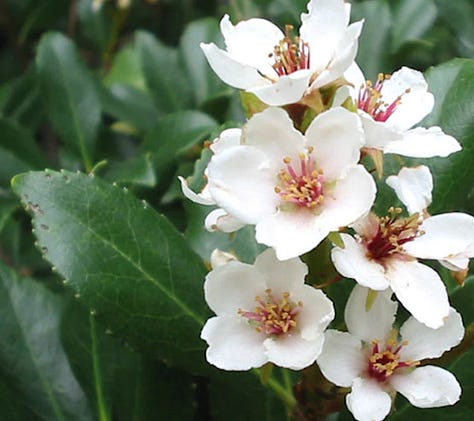

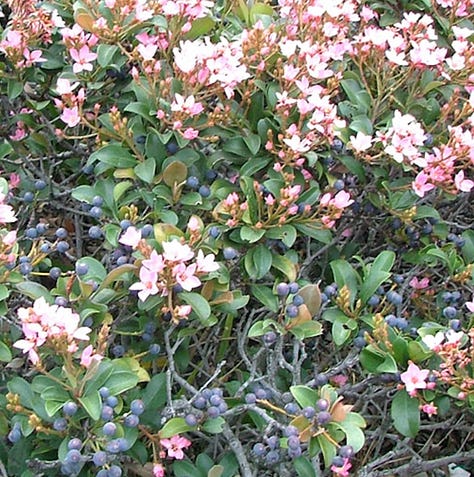
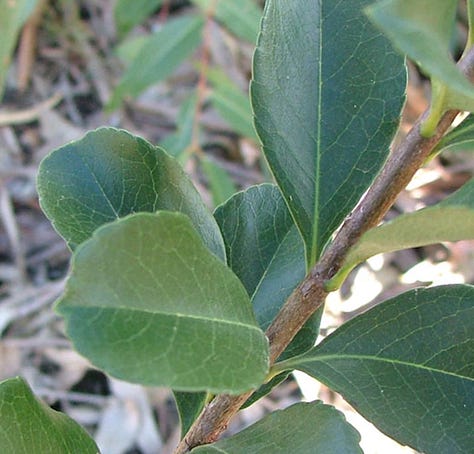
For further information on Indian hawthorn Rhaphiolepis indica, please visit the Brisbane City Council Weed Identification Tool.
Cheers,
Al, Ineke, Jenny, Jodi, Kate, Ken, Lisa, Luke, Michael, Nadia, Peter, Rosie, and Simon.
The Habitat Brisbane Team
Public Space Operations | City Standards | BRISBANE CITY COUNCIL
Email: habitat.brisbane@brisbane.qld.gov.au








